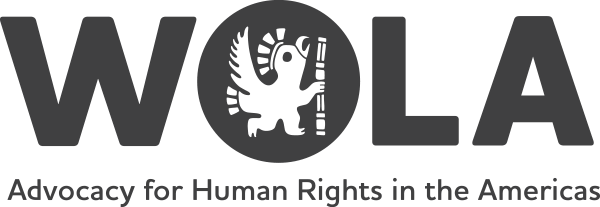Over the past three years, the arrival of thousands of Central American migrants—many of them unaccompanied minors—at the U.S.-Mexico border has brought renewed attention to the region and a considerable increase in foreign assistance. In 2015, the U.S. Congress approved a US$750 million aid package to implement a new multi-year strategy of engagement with Central America designed to help address the underlying conditions pushing many to leave the region by improving security, strengthening governance, and generating economic opportunities. The majority of the assistance began to be delivered in early 2017.
The December 2016 approval of a continuing resolution maintained funding to Central America at roughly the 2016 level until April 2017. In May, the U.S. Congress approved another $655 million to the region, and soon will begin discussions on assistance to the region for fiscal year 2018.
Ensuring that U.S. assistance is being strategically targeted, wisely invested and properly implemented requires systematic monitoring. With this in mind, the Central America Monitor is tracking and examining U.S. assistance programs in an effort to identify U.S. priorities and policies toward the region, as well as initiatives that are having positive results and potential areas of improvement. The Monitor will be tracking programs whose stated purpose is to reduce violence, strengthen law enforcement and the rule of law, combat corruption, and increase accountability.
View the Data
El Salvador Guatemala Honduras
U.S. Assistance to Central America Since 2008
Most State Department aid during this time went through the Central America Regional Security Initiative (CARSI). From FY2008 – FY2015, CARSI provided $1.2 billion and the Pentagon provided an estimated $357.2 million.
U.S. Assistance to Central America in 2016
In FY2016, there was a substantial increase in assistance to the region. Together, Guatemala, El Salvador, and Honduras were slated to receive an estimated $555.6 million. “Other countries” represents assistance to Belize, Costa Rica, Nicaragua, Panama and any other country that might receive aid through the International Narcotics Control and Law Enforcement account. “Regional Programs” represents assistance dispersed through the Development Assistance, Economic Support Fund, and Foreign Military Financing regional programs (separate from their country programs). The recipients within the regional programs have yet to be disclosed.
U.S. Assistance to the Northern Triangle in 2016, by Category
Money from several programs can support any one goal in an assistance effort. For instance, aid from both the the Defense Department as well as from the International Narcotics Control and Law Enforcement account funds counternarcotics initiatives. Below are six separate categories of assistance that U.S. aid supports. The totals include estimated Defense Department Aid ($55 million) and estimated State Department Aid ($555.6 million).
El Salvador
U.S. Assistance to El Salvador, by Account
The U.S. State Department will provide an estimated $146.4 million to El Salvador in FY 2016.
U.S. Assistance to El Salvador, by Category
The below totals include estimated State Department aid ($146.4 million) and Defense Department aid ($12.4 million) for an estimated total of $158.8 million in FY2016.
Guatemala
U.S. Assistance to Guatemala, by Account
The U.S. State Department will provide an estimated $221 million to Guatemala in FY 2016.
U.S. Assistance to Guatemala, by Category
The below totals include estimated State Department aid ($221.1 million) and estimated Defense Department aid ($29.8 million) for an estimated total of $250.9 million in FY2016.
Honduras
U.S. Assistance to Honduras, by Account
The U.S. State Department will provide an estimated $188 million to Honduras in FY 2016.
U.S. Assistance to Honduras, by Category
The below totals include estimated State Department aid ($188 million) and estimated Defense Department aid ($12.8 million) for an estimated total of $200.9 million in FY2016.
